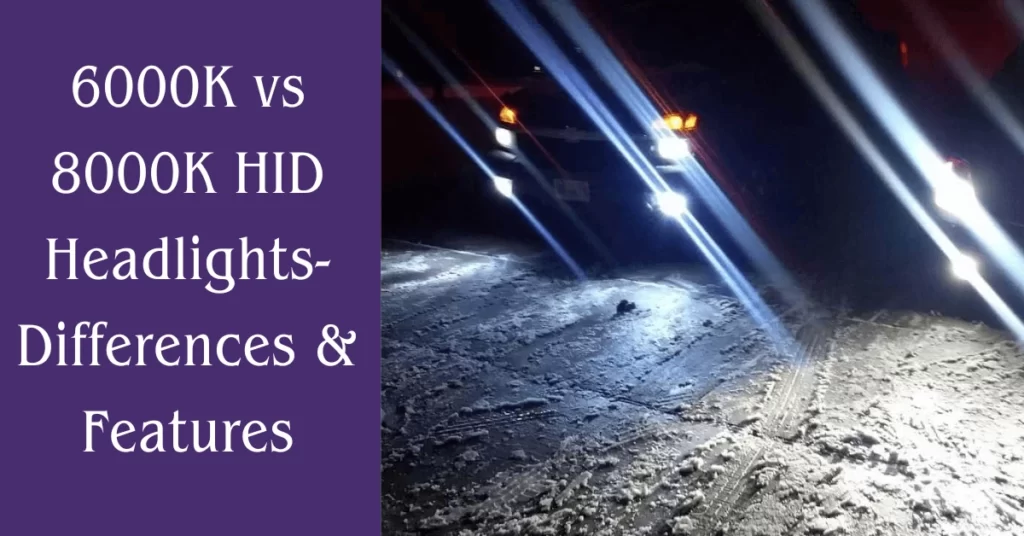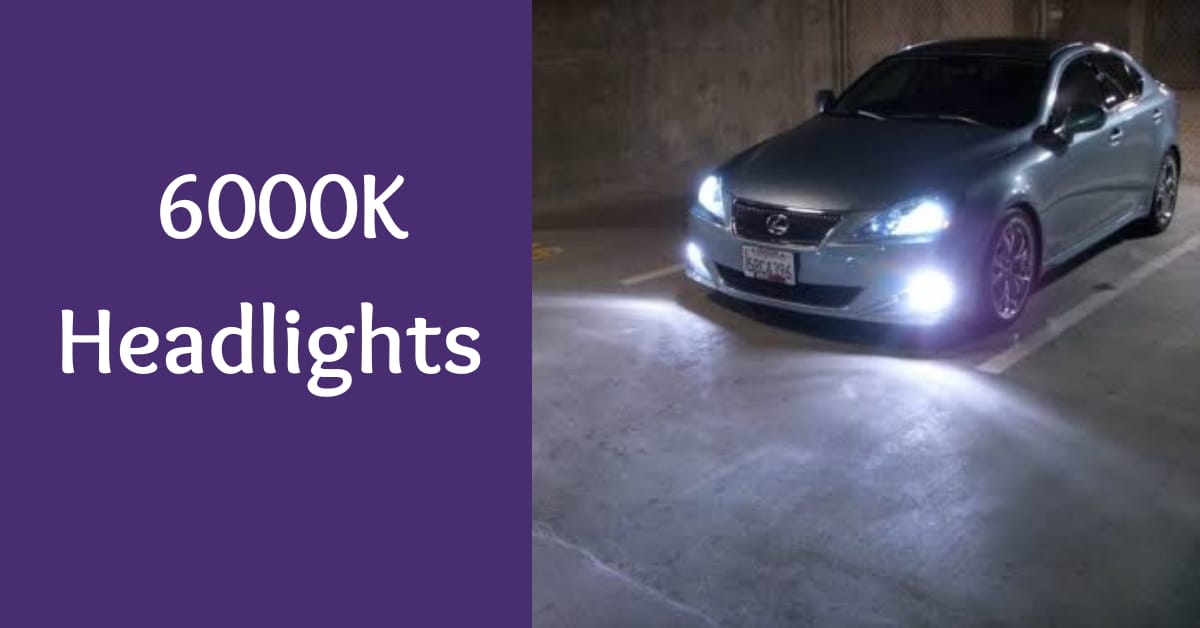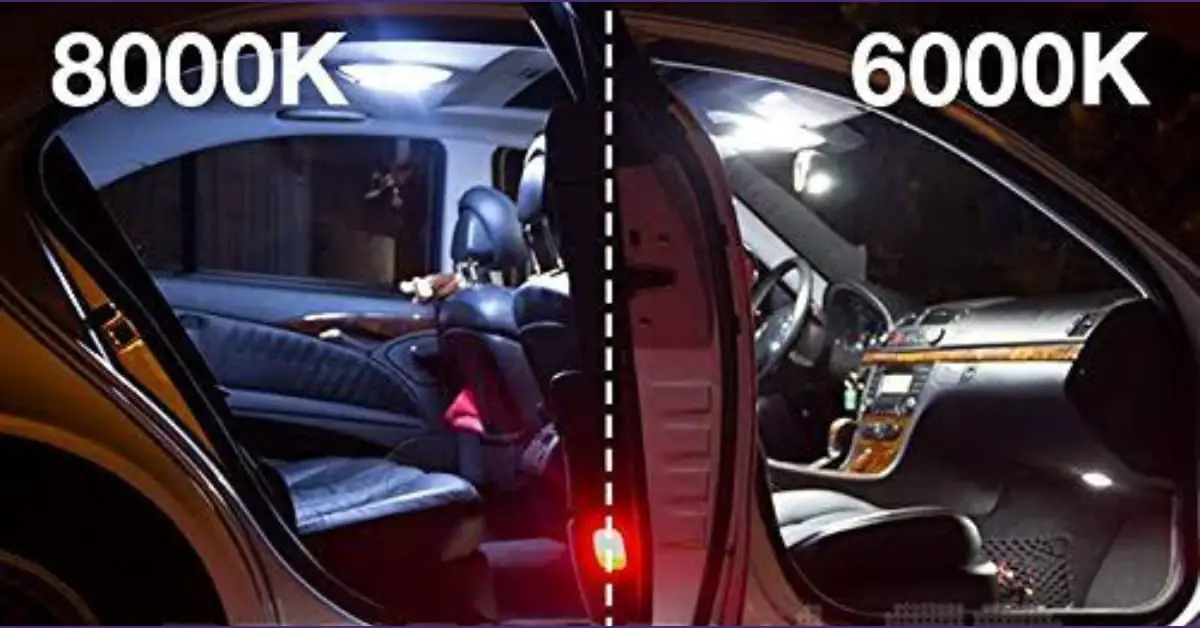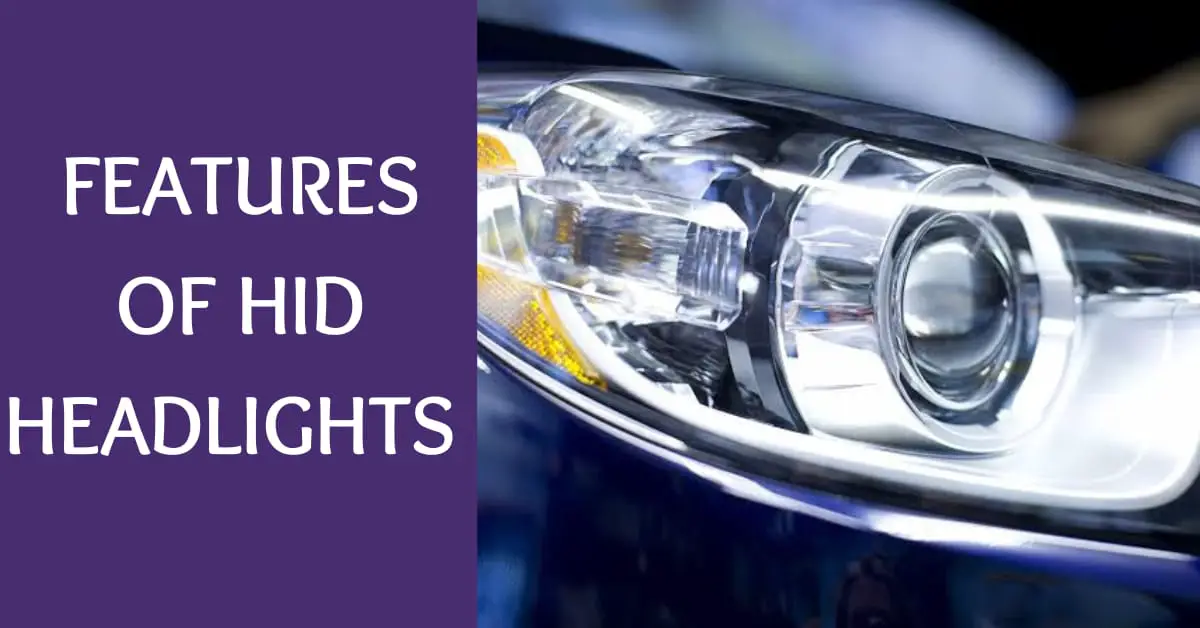
HID (High-Intensity Discharge) headlights are also known as Xenon headlights. They produce a brighter light than conventional halogen bulbs. HID headlights use a specialized gas-filled capsule. Along with an electric arc to produce a bright, white light. HID headlights are a popular choice for many vehicle owners. This is due to improved visibility and increased safety.
HID headlights last longer than traditional halogen headlights. However, their durability can be affected by a variety of factors, such as usage time, the quality of the bulbs, and the operating conditions they are exposed to. But with proper maintenance, like keeping the headlights clean, adjusting beam patterns, and using protective headlight films that are worth it can ensure the good health of your headlights.
Illumination of 6000K vs 8000K HID Headlights
6000K HID Headlights
Pros:
1. 6000k HID headlights produce up to three times more light. As Compared to standard halogen headlights. This means better visibility on the road and in dark conditions.
2. 6000k HID headlights give your vehicle a more modern look.
3. HID headlights typically last up to 10 times longer than halogen bulbs. This means less frequent and costly replacements.
4. 6000K HID headlights are more expensive upfront. But they are more cost-effective in the long run.

Cons:
1. Although 6000K HID headlights are brighter than traditional halogen headlights. They can be too bright in some situations. They can actually reduce the driver’s visibility. This is especially true when driving in foggy or rainy conditions.
2. 6000K HID headlights can create a lot of glare for other drivers. This can be a major safety issue. As it can reduce the visibility of oncoming traffic. It can make it difficult for other drivers to see clearly.
3. These bulbs are more expensive than traditional halogen bulbs. So they can be a significant investment.
4. 6000K HID headlights generate more heat than traditional halogen bulbs. Which can put additional strain on the electrical system. They can reduce the life of the headlights.
8000K HID Headlights
Pros:
1. 8000K HID headlights emit a light that is near to daylight. It makes it easier to see at night.
2. 8000K HID headlights require less energy than standard halogen headlights. Meaning they are more efficient.
3. These 8000K HID headlights have a much longer lifespan than halogen headlights. It means they will need to be replaced less often.
4. 8000K HID headlights can give a modern and stylish look to any car.

Cons:
- 8000k HID headlights may be too blue to be legal in some areas. It is important to check local laws before purchasing. Also before installing these headlights.
2. 8000k HID headlights may be too bright for some drivers. It can cause glare for other drivers on the road.
3. 8000k HID headlights require a special ballast and wiring to power them. It makes installation more difficult and costly.
4. The bulbs have a shorter lifespan than standard halogen bulbs. They last only about 2,000 hours of use.
The Differences Between 6000K and 8000K

1. When to Use:
6000K HID Headlights:
6000K HID Headlights provide superior visibility with a bright, white light.
8000K HID Headlights:
8000K HID headlights are better suited for night driving conditions. Because the light is softer and warmer. It provides a more comfortable light for night-time driving. Both color temperatures will provide a significant increase in visibility and safety.
However, while driving in mist, snow, rain, or foggy conditions, regular headlights decrease visibility by reflecting light into the driver’s eyes and creating a glare. There, fog lights work more distinctly than headlights reducing glare.
2. Brightness Level:
6000K HID headlights:
6000k HID headlights produce a cool white light. That is closer to natural sunlight. It is a bright, slightly bluish light that is most often found in new cars.
8000K HID headlights:
8000k HID headlights produce a blue/purple light. That is ideal for off-road driving. It is a brighter light than 6000k. It is often used to provide more visibility in fog and snow.
3. Interior Applications:
6000K HID headlights:
6000K HID headlights typically feature two bulbs. They are made from tungsten halide gas inside a quartz glass tube. The bulbs are connected to a ballast. It regulates the current and voltage to the bulbs. The ballast is then connected to a power source. Typically a 12-volt battery. The bulb also includes a reflector and a lens. It helps to focus the light and project it in the desired direction.
8000K HID headlights:
8000K HID headlights are composed of several components. It includes a xenon-filled quartz bulb, a ballast, a capacitor, a power supply, and a reflector. The xenon-filled quartz bulb is filled with a gas. It creates the light when it is struck by an electrical current. The ballast is a device that acts as an electrical regulator.
It controls the voltage and amperage that is sent to the bulb. The capacitor helps to maintain a constant current. It prevents the bulb from flickering. The power supply provides the electricity to the bulb. The reflector helps to direct the light in the desired direction.
4. Lifespan:
6000K HID headlights:
The lifespan of a 6000K HID headlight bulb is typically more than 3,000 hours.
8000K HID headlights:
The average lifespan of 8000K HID headlights is around 3-5 years.
5. Price:
6000K HID headlights:
The price of 6000K HID headlights is typically around $30-50.
8000K HID headlights:
While 8000K HID headlights can range from $50-100. The 8000K headlights are generally more expensive. Because they produce a brighter, whiter light and are more energy efficient.
6. Durability:
6000K HID headlights:
6000K HID headlights are extremely durable. Compared to standard halogen headlights. This is because the HID lights use xenon gas. This also makes them much more energy efficient.
HID headlights are also much more resistant to shock, vibration, and corrosion. It makes them incredibly durable and reliable.
6000K HID headlights:
Durability of 8000k HID headlights is generally very good. They should last even longer in a harsh environment. Additionally, the bulbs are filled with an inert gas. It helps to protect them from external elements. 8000k HID headlights offer excellent durability and should last for many years.
7. How to Install:
6000K:
Installing 6000K HID headlights is a relatively easy process. But it is always best to consult your car’s manual beforehand.
- First, you will need to purchase a set of 6000K HID headlights and the necessary mounting hardware.
- Disconnect the negative cable from the battery to ensure safety.
- Next, you’ll need to remove the existing headlight assembly.
- By disconnecting the wiring and removing the mounting screws.
- Once the assembly is removed, you can install the new 6000K HID headlights.
- Secure the new headlights to the vehicle using the mounting hardware.
- Then reattach the wiring.
- Finally, reconnect the negative battery cable.
- Test the headlights to make sure they work properly.
8000K:
Installing 8000K HID headlights is a relatively simple process. But it should be done with care.
- First, you will need to purchase a high-quality HID kit. That is designed for your vehicle’s headlight housing.
- When you have the kit, you will need to disconnect the car’s battery.
- Remove the existing headlight bulbs.
- Once the bulbs are removed, you will need to insert the ballast.
- Plug the HID bulbs into the ballast.
- Then mount the ballast to the headlight housing.
- After that, you will need to connect the power cables.
- Plug the HID bulbs into the headlight housing.
- Reinstall the headlight assembly.
- Finally, you will need to reconnect the battery.
- Then test the HID headlights to make sure they are working properly.
If you are a car enthusiast and love to upgrade for a modern and stylish appearance, you may get your HIDs installed with VLAND headlights with few modifications to the wiring. VLAND headlights are a popular choice among those looking to upgrade their headlight system. These types of lights are often praised for their high-quality construction, stylish appearance, as well as affordability.
8. Color Temperature:
6000K HID headlights:
6000K HID headlights produce a bright white light with a tint of blue. This color temperature has a very clear and crisp look. It is most commonly used as a more subtle and stylish upgrade.
8000K HID headlights:
8000K HID headlights produce a light that is more of a blue-violet color. This color temperature is far less subtle than the 6000K. It is often the preferred choice for drivers.
9. Beam Pattern:
6000K HID headlights:
The beam pattern of a 6000k HID headlight is generally a bright white light. It casts a wide, focused beam. It is best suited for driving in urban or suburban areas. Where there is a lot of medium light from streetlights, buildings, and other vehicles.
8000K HID headlights:
The beam pattern of an 8000k HID headlight is generally a bluish-white light. It casts a narrower, more focused beam. It is best suited for driving in rural areas where there is less ambient light.
Features of HID Headlight Bulbs

1. Bright Light:
HID headlight bulbs are known for producing a much brighter light than traditional halogen bulbs. This is because HID bulbs use a high-intensity discharge of xenon gas. This produces up to three times the amount of light.
2. Longer Lifespan:
HID headlights are able to last up to four times longer than halogen headlights. Because they do not generate as much heat. Also they use less electricity. HID headlights also require less maintenance and are more durable. It helps them to last up to 10 times longer.
3. Improved Safety:
HID headlight bulbs provide improved visibility in low light conditions. This is due to their bright light output. This can help drivers to spot potential hazards more quickly. It can avoid accidents.
4. Cost Savings:
HID headlight bulbs are more efficient than halogen bulbs. They use less energy and last longer. This can help to save money on energy bills and bulb replacement costs.
Common Types of HID Headlight Bulbs
1. Xenon HID:
Xenon HID bulbs are the most common type of HID headlight bulbs. They are the brightest and most efficient HID bulbs available. They produce up to three times more light output than a standard halogen bulb.
2. Halogen HID:
Halogen HID bulbs are the second most popular type of HID headlight bulbs. They are not as bright as Xenon HID bulbs. But they are more efficient and produce a whiter light than a standard halogen bulb.
3. LED HID:
LED HID bulbs are the newest type of HID headlight bulbs. They are the brightest type of HID. They are more efficient than both Xenon HID and Halogen HID bulbs. They also last longer than either type. Up to 50,000 hours compared to 3,000 hours for Xenon HID bulbs.
Applications of HID Headlights
1. Cars:
HID headlights are filled with a gas that, when exposed to a high voltage. It produces a light that is up to three times brighter than a halogen bulb. HID headlights also use less energy than halogen bulbs. It allows cars to get up to 20 percent better fuel economy.
2. Motorcycles:
HID headlights are becoming increasingly popular on motorbikes. They offer the same improved visibility and road safety benefits.
3. Bicycles:
Many off-road and mountain bikes are now fitted with HID headlights. They offer cyclists a much safer and more powerful lighting solution.
4. Emergency Vehicles:
Emergency vehicles, such as police cars and ambulances. They often use HID headlights to provide maximum visibility when responding to an emergency.
5. Industrial:
HID headlights are widely used in industrial applications. Such as forklift trucks and construction equipment. Where a powerful and reliable lighting system is essential.
